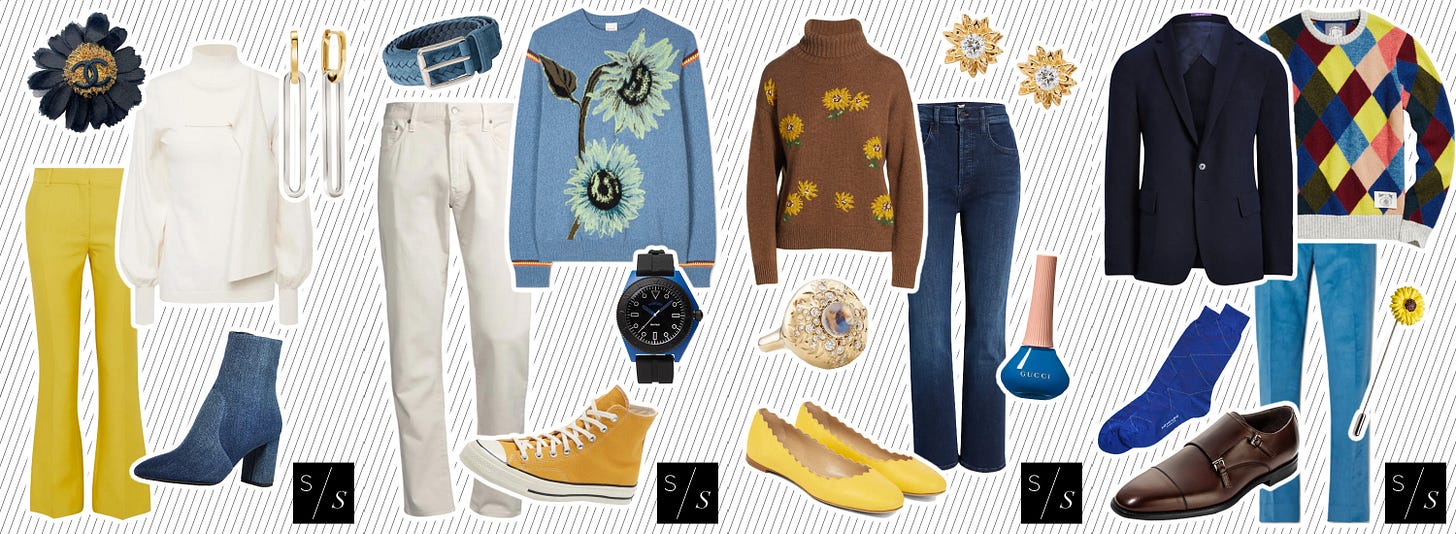There are many ways to use your voice to show solidarity, support, or make a statement of protest. Clothing is one such communication tool.
The intentional selection of garment styles, colors, and symbols have been used for centuries to make declarations by groups. Notably: white worn by the Suffragettes, “Sunday Best” during the civil rights movement, peace signs, rainbow accessories for LGBTQ+ pride, green neckerchiefs in Argentina, pink pussy hats... The power of colored clothing and accessories, and the semiotics of fashion remain strong today.
Over the past week, your news and social feeds have likely been dotted with golden yellow, azure blue, and sunflowers buttressing Ukraine and spreading messages of unity across communities and around the world. A visual expression of resistance against the invasion; one that is spreading rapidly across digital channels.
Why do we reach for uniformity of colors and symbols in times of strife? Because it works. Aligning around the nuances or obvious aspects of fashion brings the individual into the fold of a greater movement or cause. It’s encouraging. It rallies and bands people to come together. It allows you to express yourself and your position in a bold, public way.
How to Wear Blue & Yellow Together
Wearing colors and symbols can be statements of unity and affinity, yet color mixing can be challenging especially when stepping out of your traditional color palette. Washes of blue and yellow with touches of sunflower symbols are appearing on politicians, the first lady, and protesters around the globe who are joining together in support of Ukraine.
Here’s how to dress for the cause…





